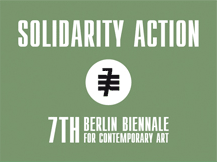The attitude of institutions regarding centers of artistic diffusion is all too often oriented towards creating a spectacle as proof of the “good performance” of appointed managers. The mixture of political career advance and cultural appointments represents a problematic node of the dysfunctional issues that make any farsighted, pragmatic discussion improbable.
The Ministry of Cultural Heritage and Activities, like the main places of production and distribution of art in Italy, are in the hands of political subjects that have little interest in running these institutions, or are without the expertise required to establish a dialogue with the international art community. The management of centers of this type should be assigned to technical persons called upon to assist the politicians appointed to certain posts. The ideological premises, so to speak, that lead to a certain inadequacy of project vision can be traced back to an idea held by politics of art as an industry. The art system is undoubtedly also an industry, though it cannot be treated with the same parameters applied to the industrial dynamic. The places of art production cannot be judged according to merely utilitarian or commercial parameters. A museum could and should be compared, in a way, to a hospital. Its success cannot be based only on numbers, on profits. If museums or hospitals lose money that does not mean they are not functioning properly. How can we evaluate, only with numbers, the degree of benefit granted by the care of patients? Spaces of experimentation and research, by nature, seldom make profits. The artist in society can raise the level of quality of life of everyone, achieving a possibility of polyphonic experience and vision of existence. The more a country is in crisis, the more the citizens should be granted free access to places of artistic production and distribution. In Austria, where I live, citizens with an income below the lowest income tax bracket are given free access to all museums; this is an important factor that engenders faith in the community and in the programming of centers of artistic production and research. This does not require funds, but just ideas and – if they are lacking – the desire to do things. In this historical moment characterized by the profound crisis of the very idea of welfare, it is of fundamental importance to think about alternative forms of financing. Artists and those institutions that have always been accustomed to working with public financing are going through the worst difficulties, or even a state of real emergency. Holland is one of the most paradigmatic examples. In recent years (reaching a peak in the 1990s) even non-Dutch artists, as long as they were residents of Holland, have regularly benefited from often generous public funding. If we have to come to terms with increasingly pressing and necessary cuts in public financing and welfare, I think the first subjects that should benefit from new measures should be the public institutions. It is more important to economically support the programming of a museum or a research center, instead of individual artists.
The latter, especially if they are young, can sustain or pursue research by doing a job that allows them to live. In an ideal world, obviously, artists should receive public support, but in this moment the economic planning of governments has to come to grips with concerns that have to do with the basic needs of individuals. The critical character of present conditions imposes the development of new ideas: a necessary change to prevent attitudes of laxity that run the risk of compromising the operation of subjects accustomed to relying on public funding, that was once sizeable and constant. In the Netherlands, where the private sector has never really supported art, today private initiatives are emerging, as well as mixed public-private models. Moments of difficulty permit human beings to find new strategies, bringing their best efforts to the fore. The superfluous is overshadowed, in everyday life as in artistic production.
FRANCESCO STOCCHI
Senior Curator at Museum Boijmans van Beuningen, Rotterdam since 2012 and editor of AGMA magazine.


